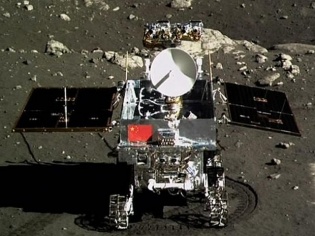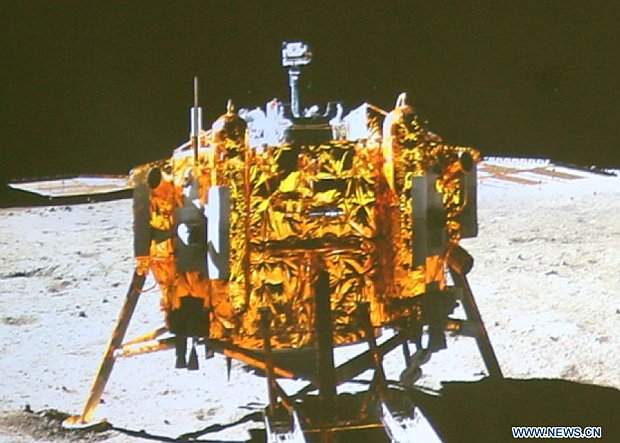-
Chandrakant 'CK' Isi
16th Dec 2013
China's Moon Mission Chang'e-3 Explained | TechTree.com
China's Moon Mission Chang'e-3 Explained
The lunar programme that helped China join the ranks of the US and Russia.

The country that manufactures most of the electronics in this world, has taken a big leap in the space exploration. Yes, we're talking about our neighbouring country China, which landed its Chang'e-3 spacecraft on the Moon. During the 12 minute landing procedure, there was no contact between the lander and mission control. Chang'e-3 used onboard sensors to avoid obstacles during its descend.
A few hours after landing, the craft released Yutu (literal meaning jade rabbit) rover. In case you're intrigued by the naming, Chang'e is the Goddess of the Moon in the Chinese culture. And the Yutu is her pet rabbit. With successful landing China has joined the ranks of the United States and Russia to become the third country to achieve this feat. Japan's Hiten (1990), European Space Agency's SMART-1, and India's Chandrayaan 1 doesn't make it to the list since those crafts were only orbiters. Lunar landing is a very complex process, check out the image below to find out how the Chinese did it.
Image courtesy: news.xinhuanet.com
For those not in the know, the first Lunar soft-landing was made by former Soviet Union's Luna 9 spacecraft in 1966, It was also the first lander to beam data and images from the surface of a celestial body. Later, the United States created history by successfully landing humans on the Moon in 1969. In subsequent missions, American astronauts drove Lunar Roving Vehicle (let's simply called them lunar buggies). Soviets also sent remote-controlled rovers, Lunokhod I (1970) and II (1973). After the ever-exciting Space Race between the United State and former Soviet Union mellowed down, the Moon must have been feeling lonely, until the Chang'e-3 landed.
The spacecraft was launched on 1st of December, 2013. According to CCTV (in communist China, "CCTV" is their National Television), Chang'e-3 touched down in a 249 km diameter impact crater, Sinus Iridium situated in northern hemisphere. The lander weighs over a ton, and holds various instruments including solar panels, EUV (Extreme Ultraviolet) camera, three panoramic video cameras, soil probe, and there are unconfirmed reports of RHU (Radioisotope Heater Unit) to help it survive the extremely cold lunar nights.
Chang'e 3 lander photographed by Yutu rover (source: news.cn).
The six-wheeler Yutu rover tips the scales at nearly 140 kg. Its payload includes GPR (Ground-Penetrating Radar) to study lunar crust, two solar panels for power, X-ray and infrared spectrometers to analyse chemical composition of the soil, and six cameras (2 panoramic, 2 navigation, and 2 hazard-avoidance). The information may not be fully accurate since China's space programmes are quite secretive. Unlike NASA, CNSA (China National Space Administration) doesn't publicly post mission related data on its website.
Picture of Yutu rover snapped by the lander.
- DRIFE Begins Operations in Namma Bengaluru
- Sevenaire launches ‘NEPTUNE’ – 24W Portable Speaker with RGB LED Lights
- Inbase launches ‘Urban Q1 Pro’ TWS Earbuds with Smart Touch control in India
- Airtel announces Rs 6000 cashback on purchase of smartphones from leading brands
- 78% of Indians are saving to spend during the festive season and 72% will splurge on gadgets & electronics
- 5 Tips For Buying A TV This Festive Season
- Facebook launches its largest creator education program in India
- 5 educational tech toys for young and aspiring engineers
- Mid-range smartphones emerge as customer favourites this festive season, reveals Amazon survey
- COLORFUL Launches Onebot M24A1 AIO PC for Professionals







TECHTREE